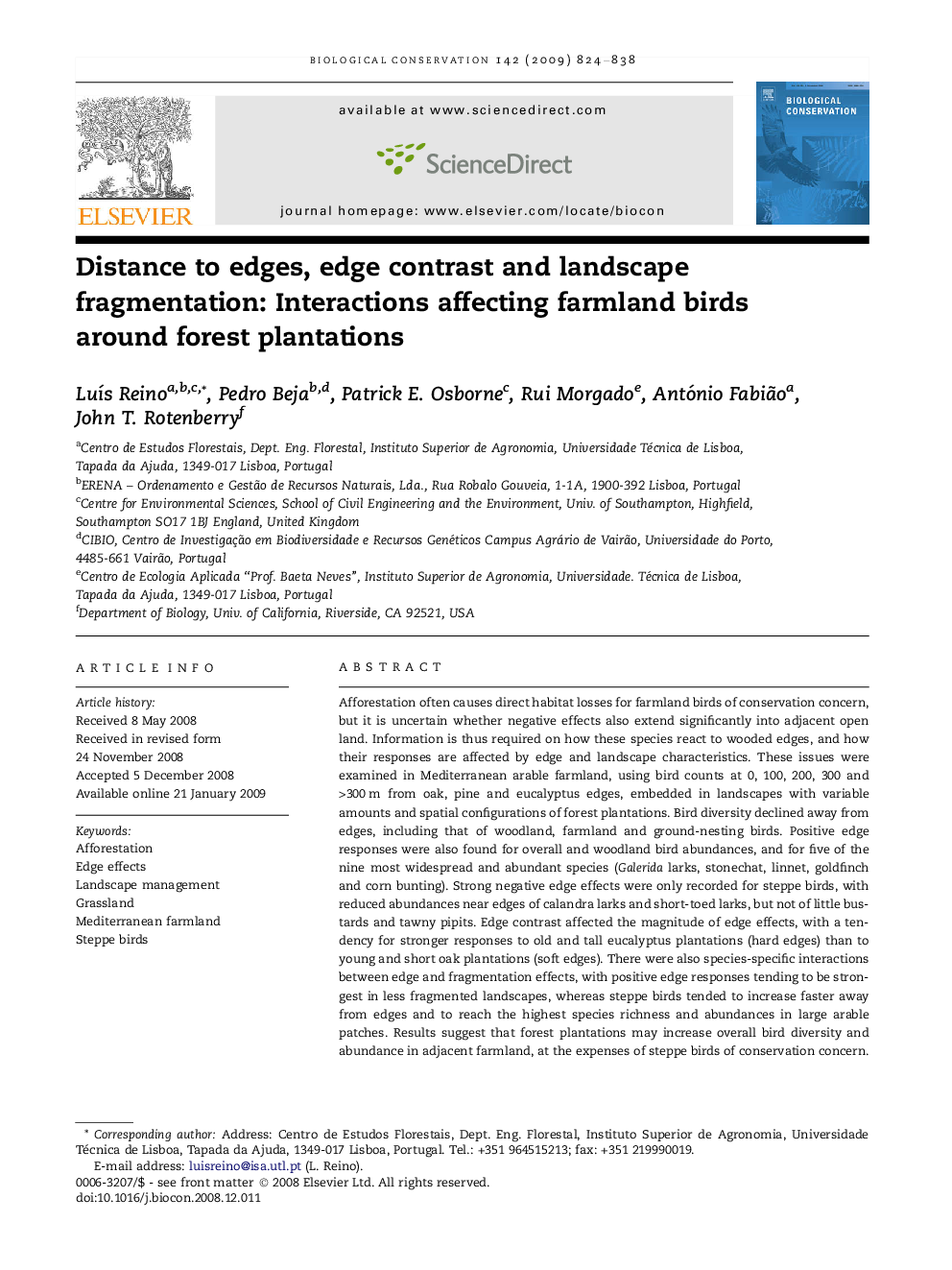| کد مقاله | کد نشریه | سال انتشار | مقاله انگلیسی | نسخه تمام متن |
|---|---|---|---|---|
| 4386364 | 1304564 | 2009 | 15 صفحه PDF | دانلود رایگان |

Afforestation often causes direct habitat losses for farmland birds of conservation concern, but it is uncertain whether negative effects also extend significantly into adjacent open land. Information is thus required on how these species react to wooded edges, and how their responses are affected by edge and landscape characteristics. These issues were examined in Mediterranean arable farmland, using bird counts at 0, 100, 200, 300 and >300 m from oak, pine and eucalyptus edges, embedded in landscapes with variable amounts and spatial configurations of forest plantations. Bird diversity declined away from edges, including that of woodland, farmland and ground-nesting birds. Positive edge responses were also found for overall and woodland bird abundances, and for five of the nine most widespread and abundant species (Galerida larks, stonechat, linnet, goldfinch and corn bunting). Strong negative edge effects were only recorded for steppe birds, with reduced abundances near edges of calandra larks and short-toed larks, but not of little bustards and tawny pipits. Edge contrast affected the magnitude of edge effects, with a tendency for stronger responses to old and tall eucalyptus plantations (hard edges) than to young and short oak plantations (soft edges). There were also species-specific interactions between edge and fragmentation effects, with positive edge responses tending to be strongest in less fragmented landscapes, whereas steppe birds tended to increase faster away from edges and to reach the highest species richness and abundances in large arable patches. Results suggest that forest plantations may increase overall bird diversity and abundance in adjacent farmland, at the expenses of steppe birds of conservation concern. Clustering forest plantations in a few large patches and thus reducing the density of wooded edges at the landscape-scale might reduce such negative impacts.
Journal: Biological Conservation - Volume 142, Issue 4, April 2009, Pages 824–838